Six Central Saint Martins Designers to Watch
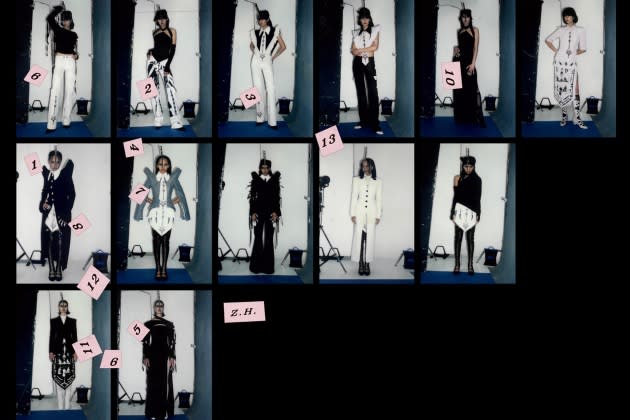
LONDON — Central Saint Martins is famous for producing fashion designers of tomorrow, counting the likes of Lee Alexander McQueen, John Galliano, Kim Jones and Stella McCartney as some of its alums. The next generation designers from the institution — some recent graduates and others entering their final year, are no different.
Here are six designers from Central Saint Martins who could make big waves in the near future.
More from WWD
Hollywood Unlocked's Impact Awards 2023 Red Carpet With Chloe Bailey, Tiffany Haddish and More
Essence Festival of Culture Throughout the Years: Performances, Panels, Stars and More
Lucila Safdie
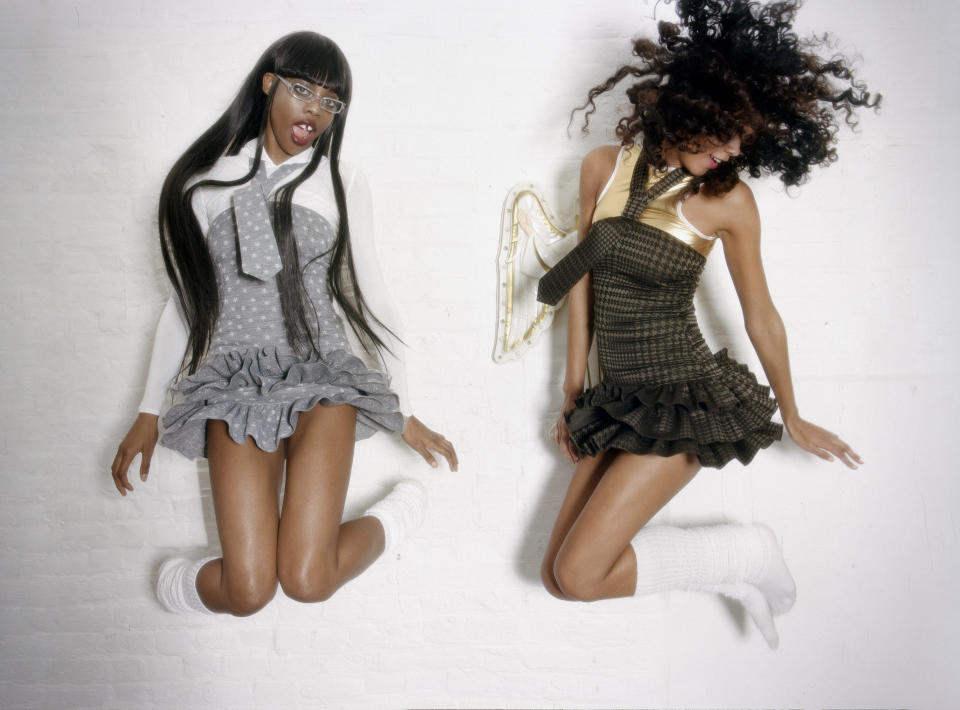
Recalling girlhood and early Aughts American Apparel through frills and ultra short-shorts is Lucila Safdie, who graduated from Saint Martins’ womenswear pathway in 2021.
The Argentinian-born designer’s brand, which launched last February, was the spontaneous result of a collaboration between her and stylist, and current Central Saint Martins student, Jagi Nelson.
In a time of sociopolitical and economic flux, the label’s nostalgic references to growing up as a young woman in the early 2000s through the lens of female empowerment have struck a chord.
“The inspiration was mainly coming of age films, like Sofia Coppola movies, ‘Spring Breakers,’ or photographers like Elaine Constantine and Richard Kern that take portraits of young girls in that awkward moment,“ Safdie said.
“For me, it’s a really beautiful moment in life. It’s crazy how all girls go through these different universal experiences,” the designer added.
Bandeau tops crafted out of deadstock fabric are printed with the collection’s title, “Lick the Star,” in gold block lettering, pleated skirts are layered over capri trousers, and sleeveless minidresses with frilled hems and attached ties are an ode to the playfulness of youth.
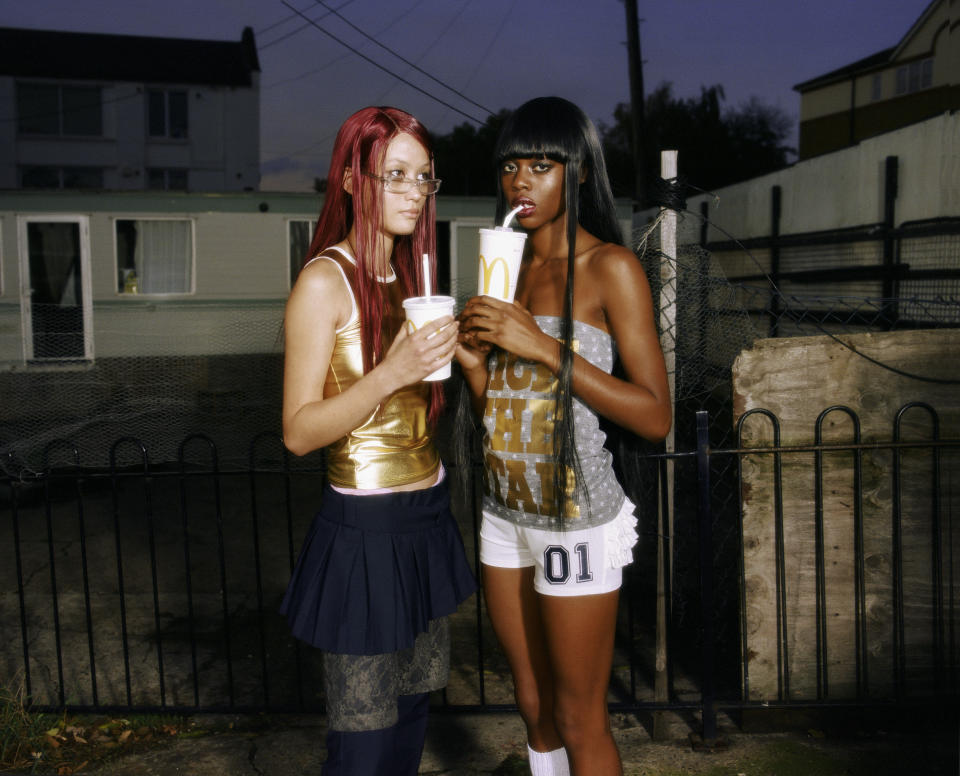
The collection specifically pays homage to Coppola’s writing and directing debut, “Lick the Star.”
“I love Sofia Coppola. When I was a teenager, she was one of the only famous female filmmakers that were showing a feminine point of view within her filmography,“ Safdie said.
“I think she explores femininity in a perfect way,” she added.
After the brand’s initial success, a second collection is in the works.
“It’s coming soon, around August or September. I’m really excited about the next collection because it’s going to live in the same universe but be totally different,” she alluded.
Zeid Hijazi
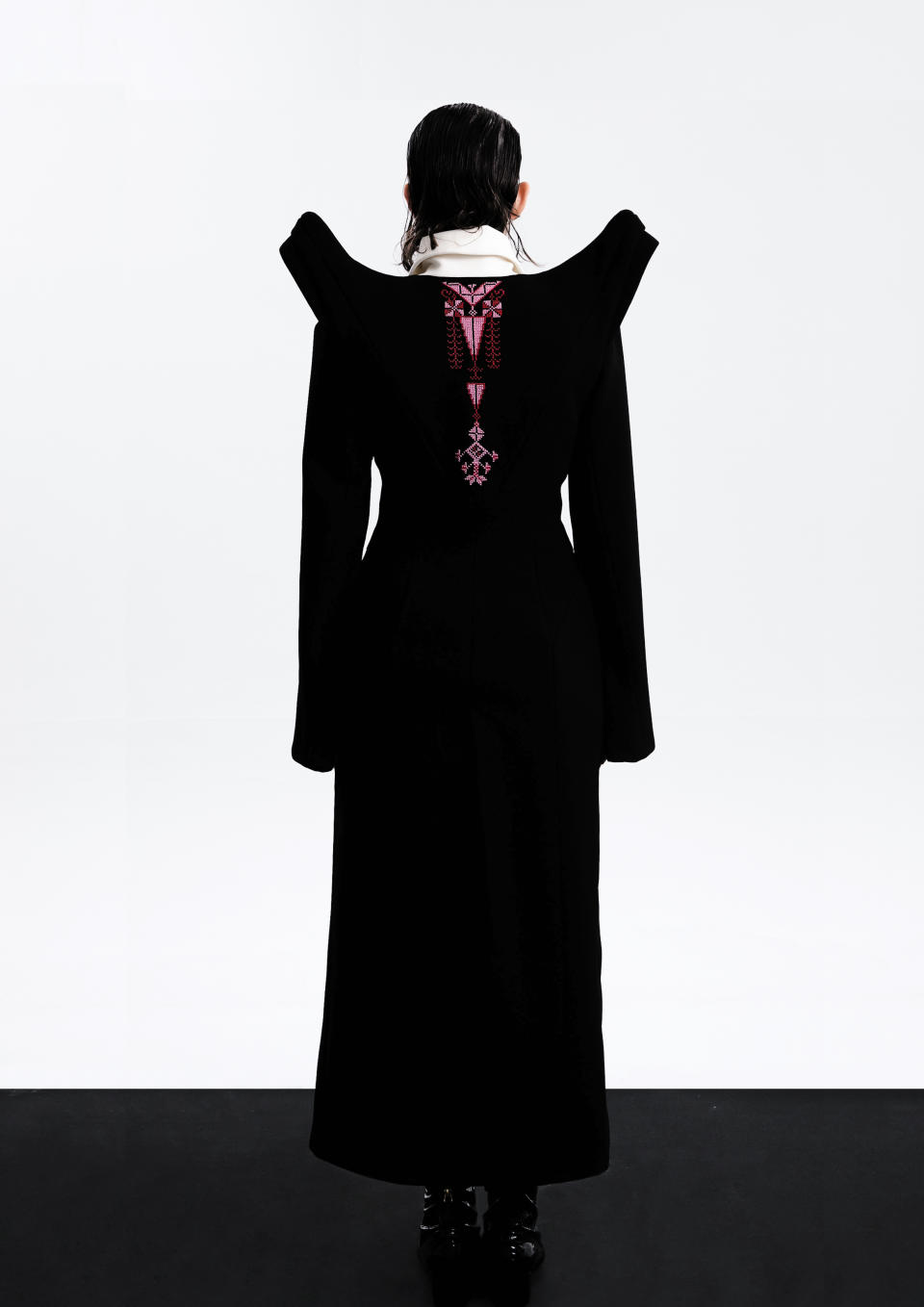
Designer Zeid Hijazi looks to fuse his Palestinian heritage with cyber-styles of the future in his couture designs.
Sartorial jackets feature power shoulders that emulate a blade’s hilt; long evening dresses are adorned with sensual cutouts along the neckline, and tasseled capes are reminiscent of rugs.
Titled “Kalt,” after the protagonist of “Bedwin Hacker,” a film about a woman who hacks into European television frequencies from the desert to broadcast pro-North African messages, the collection reinterprets stereotypes of the Middle East through an Afrofuturist lens.
“I was trying to create this female hacker, who’s classy and elegant in this Mugler-ian silhouette. She’s sexy and powerful, which you can see in the architectural cutouts,” he explained.
Throughout the collection is Tatreez, an intricate embroidery technique stemming from the Middle East. Hijazi used hand stitching made by Lebanese female refugees from the Inaash organization.
“I looked at Palestinian embroidery, and used it to represent the hacking that Kalt was using,” he said.
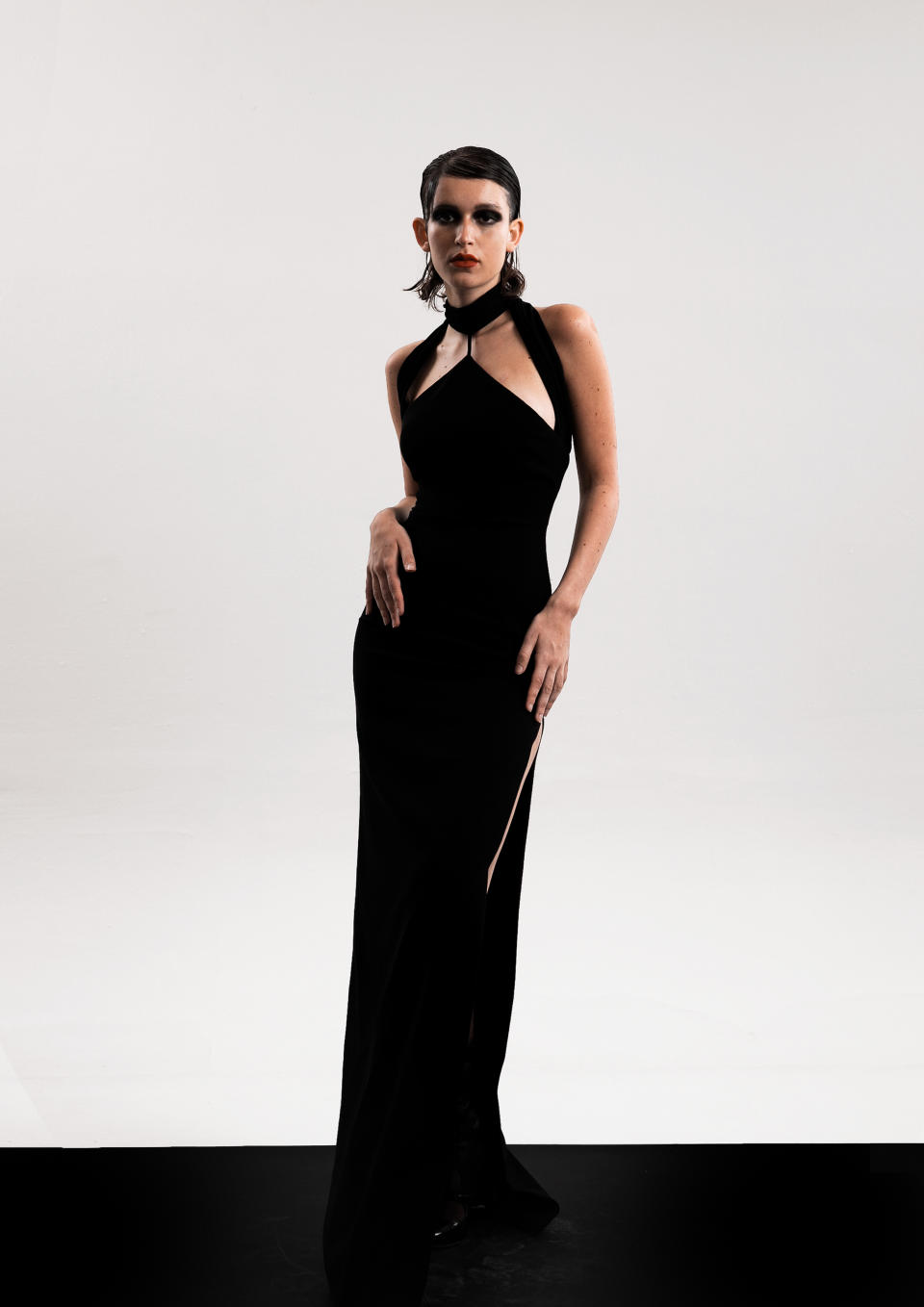
The Fashion Trust Arabia 2020 winner, who will return to Saint Martins this fall for his final year, designed his brand’s first collection out of fear of graduating.
“I had this episode where I was like, ‘Oh my god, it’s the final year. What do I do?’ It’s hard to find jobs in fashion, and I’m scared to fail,” Hijazi said.
“So, I created this backup plan, which was to launch my brand early on. I’m happy I did it; I’m no longer scared and I know what I want to do,” he added.
Ending his year out with a splash, the designer said he plans to launch an online shop for his brand and hold a trunk show before returning to school to design his graduate collection.
“I really know what I want to do and I’m so excited about it,” were the only details Hijazi would let slip.
Katya Zelentsova
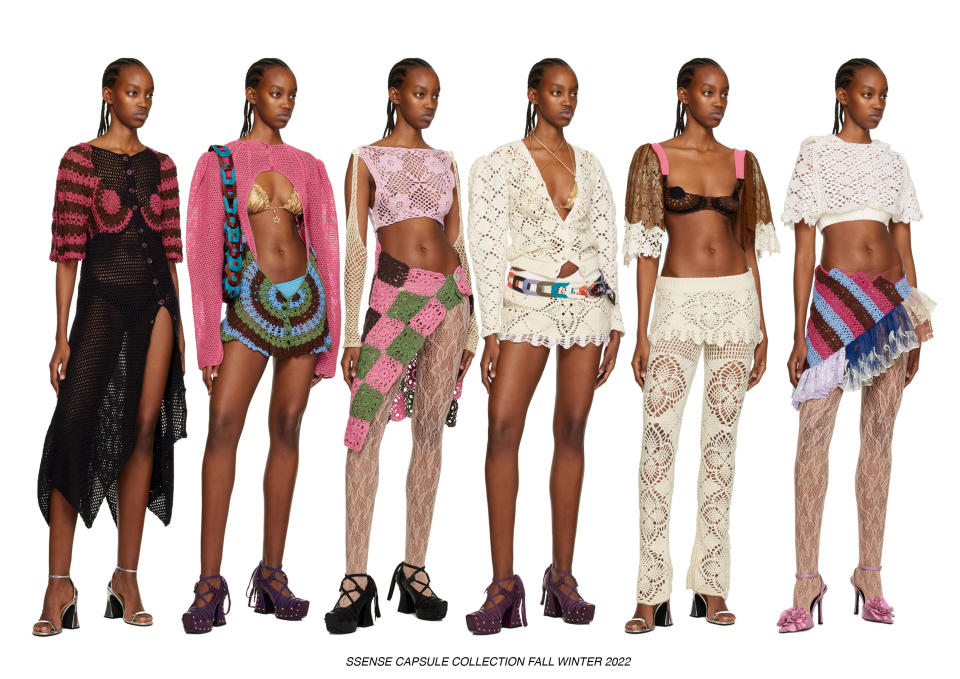
Reimagining sexy, sustainably made knitwear through a fusion of unique textiles is Katya Zelentsova’s brand.
“I’ve really been interested in the idea of sensual clothing, but in the sense of something that feels really soft and protective, but looks quite snatched,” Zelentsova said.
The brand’s playful, retro futuristic take on knitwear — a multicolored crochet dress features floral motifs in an homage to grandma’s doilies and a knit top and skirt set feature individually applied metallic studs that create a swirling mosaic — makes it clear why Zelentsova has been able to build a strong following so early in her career.
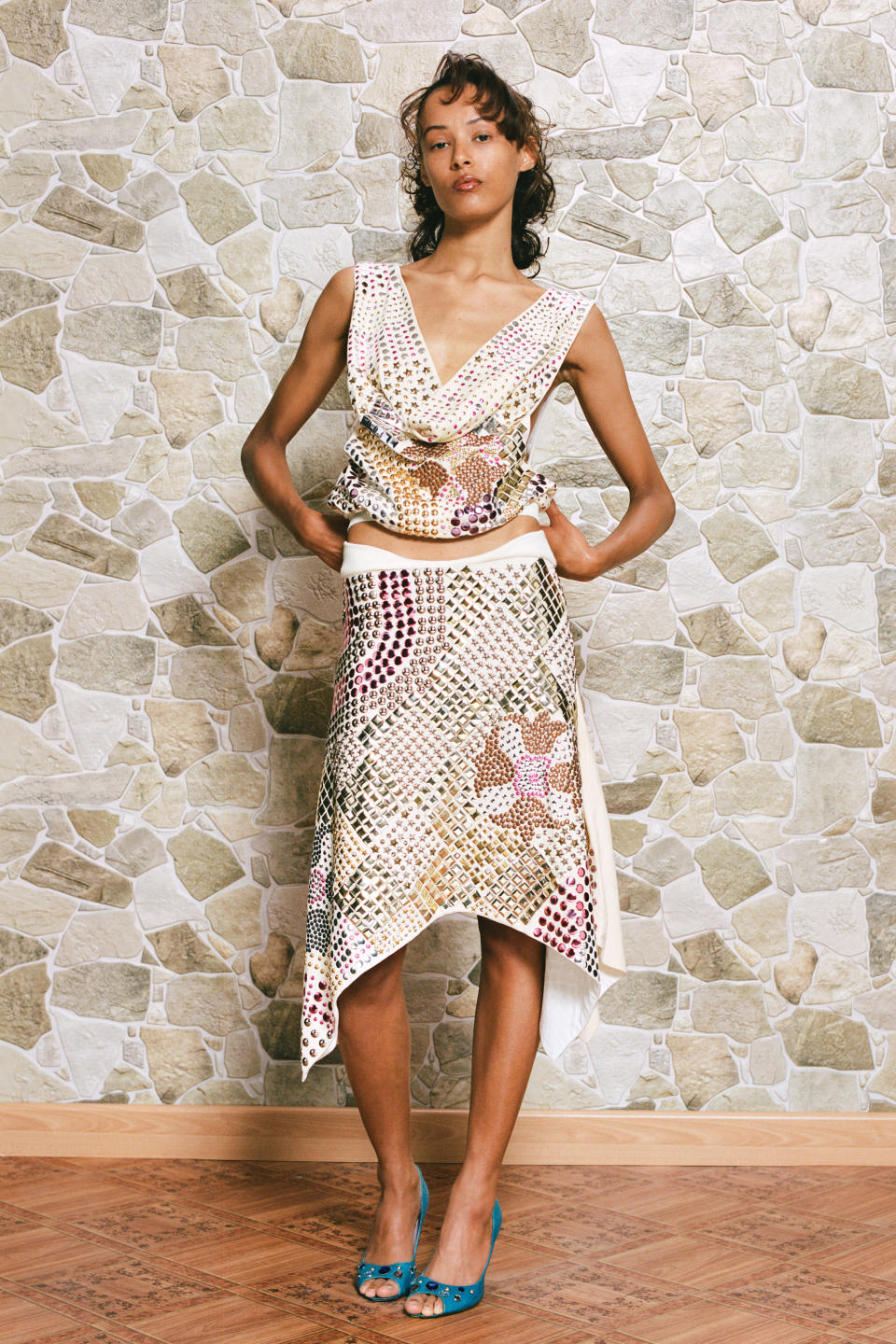
To make things even better, the label produces almost zero-waste.
“The kinds of pieces that I make, there is a certain amount of off-cuts,” she explained.
Inspired by her time at university, when the designer would make custom garments, “I started doing these small capsule collections that are direct-to-customer, which are made entirely out of waste, off-cuts, and whatever leftover materials I have left” from her capsule collections with retailer Ssense, she said.
The business model also allows Zelentsova to experiment with designs before fashioning an entire collection.
“It’s a pretty quick turnaround and it also really helps me try out new ideas — some things you come up with and you’re not sure you’re going to spend six months putting it into an entire collection — but it’ll be interesting to see how it goes with people if I just release it now,” she said.
That sense of experimentation will be present in Zelentsova’s upcoming collection.
“I came up with this time traveling gymnast that goes back to compete 80 years back. I reimagined basic ’70s uniforms through the kind of codes of late Victorian dressing,” she teased.
Daeun Hong
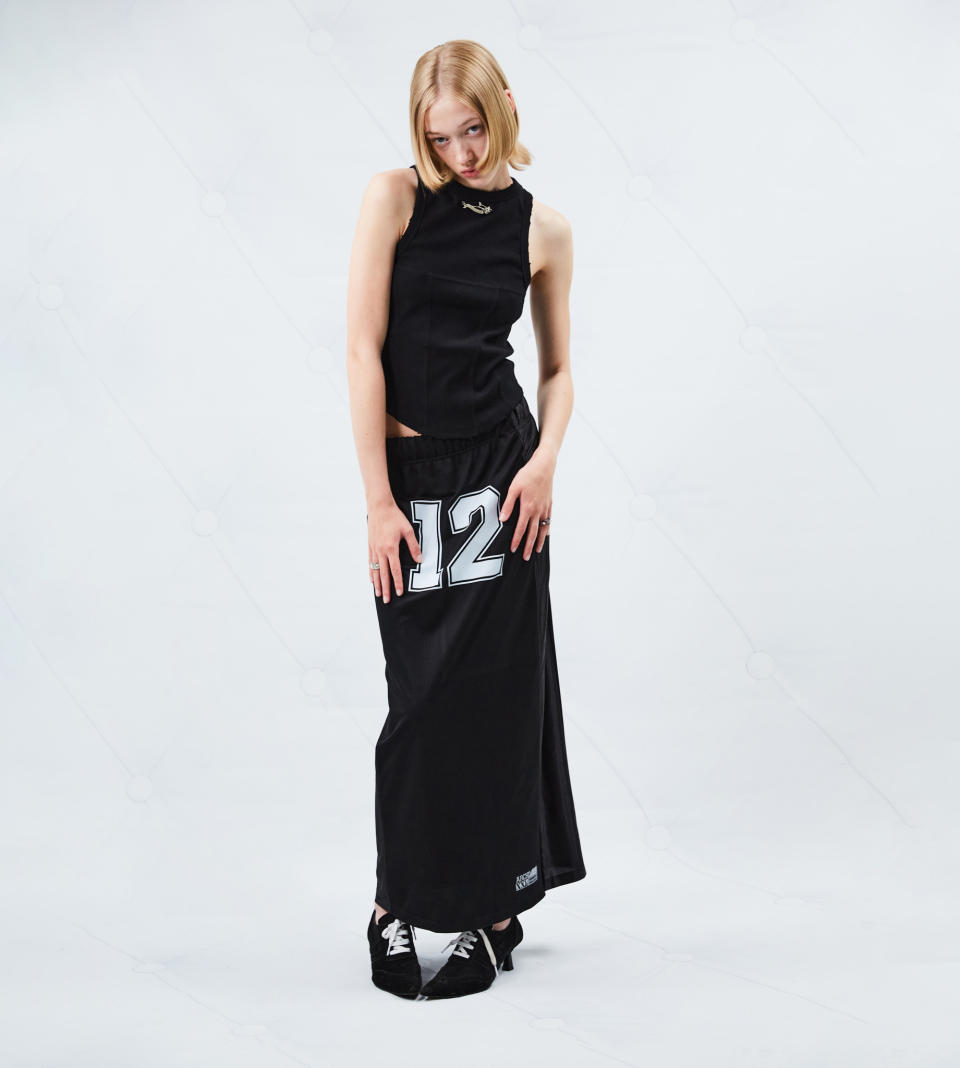
The brand 2000 Archives may be an independent label now, but it wasn’t always that way.
Started by Daeun Hong and Yoon In, who both graduated from Saint Martins this year, the brand sold vintage and archival clothing from the early 2000s, hence its name. It was only in 2020 that the label began to manufacture its own clothing.
That’s not the only thing that sets the brand apart: rather than studying design, Hong and In were both students in the university’s Fashion Communication: Image and Promotion course, or FCP, which centers around creating visual media.
“I’ve never seen someone from FCP who had a designer brand. 2000 Archives is quite special from that point,” Hong explained.
“I had no background in making garments, but in [South] Korea we have a good factory and production system,” she continued.
Although In has stepped away from the brand to pursue other opportunities, Hong is still at the helm, and describes its newest collection as a reinterpretation of traditionally masculine silhouettes, such as American football uniforms, through a feminine lens.
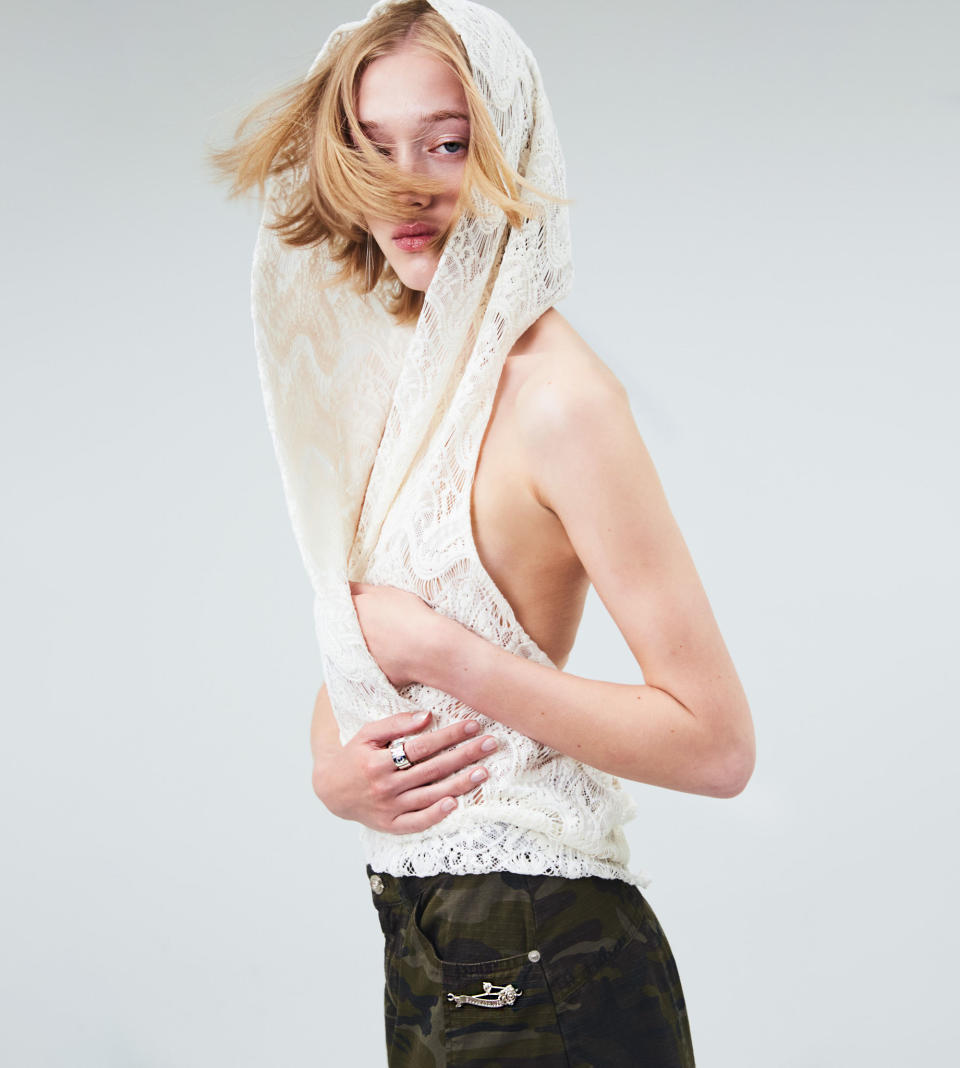
“We wanted to make some connections between femininity and sporty silhouettes. There are maxiskirts made of sport mesh, and fabrics with sporty graphics,” such as number appliqués, she said.
Also included in the collection are sleeveless lace hooded tops, equal parts off-duty footballer and Dune, as well as a long camouflage dress, its graphic pattern subverted with the addition of gray lace and a ruffled hem.
The brand’s spring 2023 release comes on the heels of a collaboration with photographer Jamie-Maree Shipton, who goes by the moniker Airtomyearth online.
“Her images are really strong and iconic, so printing her images on our products was very powerful,” the creative director said.
After two successful pop-up shops held in Paris to celebrate the collaboration with Shipton, a third for the brand’s independent collection is in the works and is set to open in Seoul in the fall.
Freddy Coomes
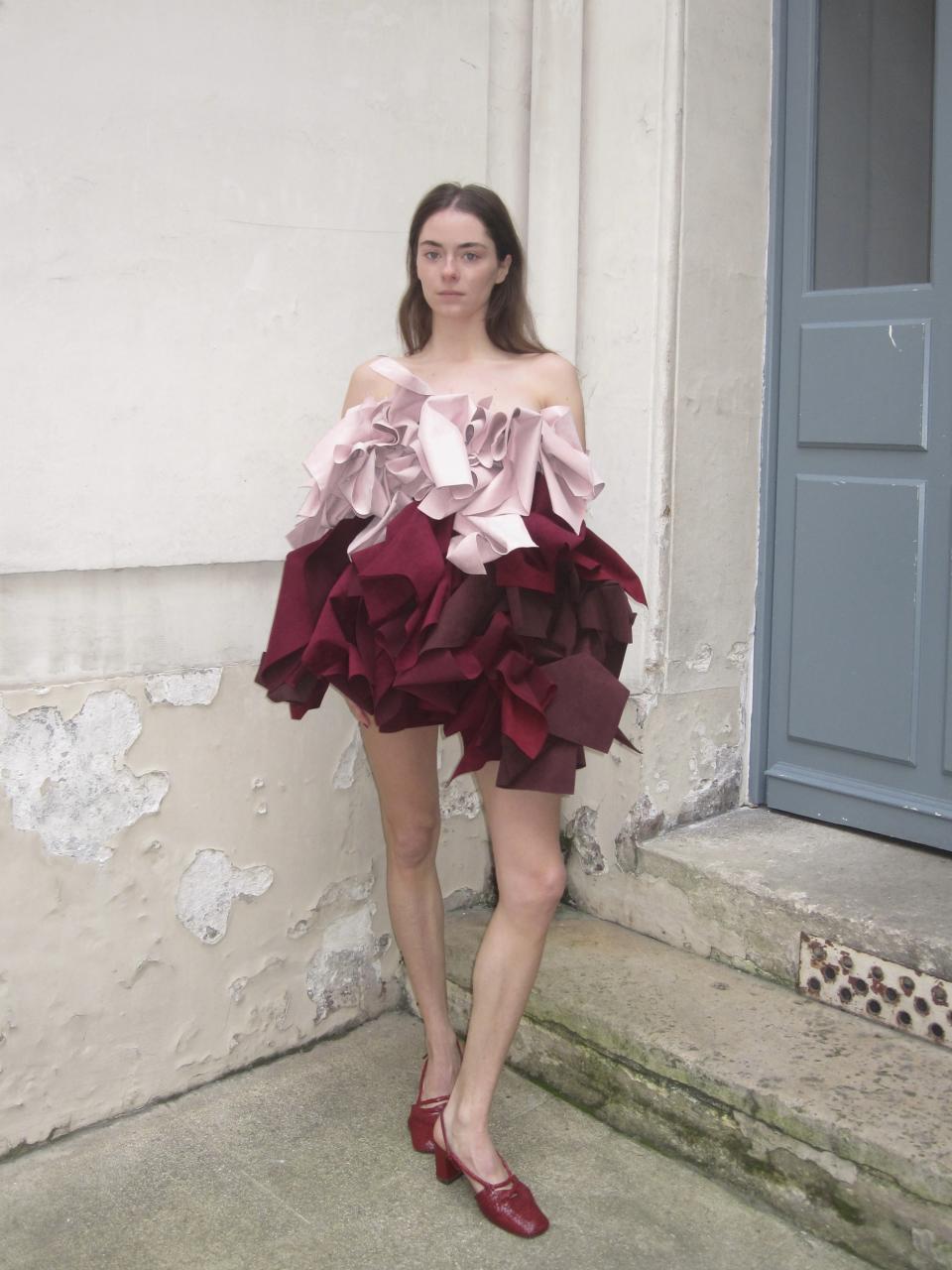
“I’m not so keen on the personal element to design, at least at the moment, in my own work. I’m more interested in exploring what a garment is as opposed to who I am. I think about myself enough to satisfy that area of my brain,” Freddy Coomes, who is heading into his final year as a fashion print student, said about his work.
Deadstock and secondhand fabric is at the forefront of how Coomes conceptualizes garments.
“I read materials. I have a real interest in looking at a fabric and then the garment comes after. I always will start with fabric. It’s never a garment, it’s never research, it’s never people on the street. It’s always, ‘Can we get the fabric first?’” the designer explained.
“It’s anything that really captures my interest. If it sparks a sense of excitement and joy, that’s immediately something that I’m gonna go and buy,” he continued.
A flick through his Instagram reveals the essence of his designs, such as a pale pink Adidas tracksuit Coomes reworked by printing an image of a lily over it, and a blush and burgundy dress made from florets of ultra suede scraps, completely sewn by hand.
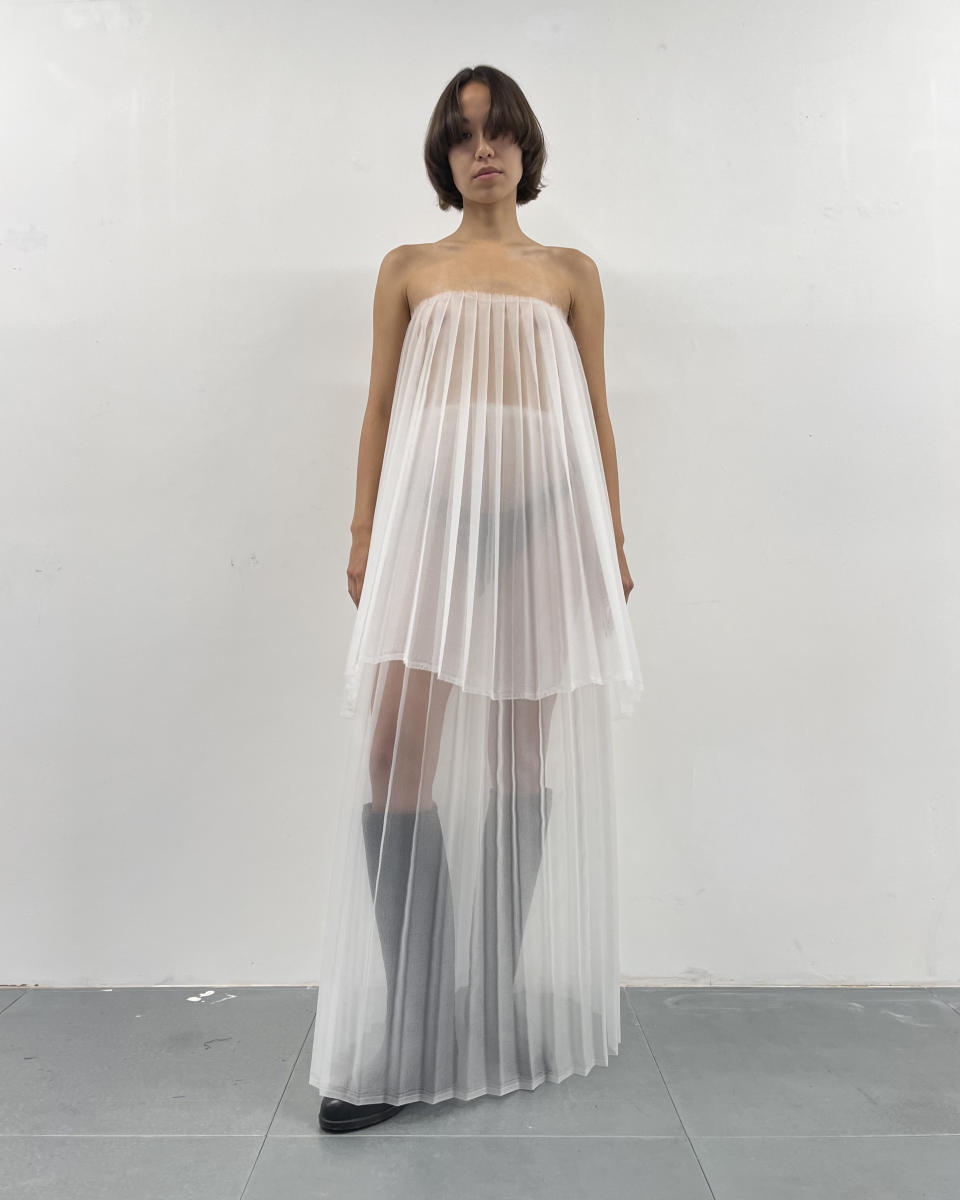
The designer frequently collaborates with classmate Matt Empringham, a partnership that has resulted in more than six collections.
Their fifth collection, released last summer in an exhibition, saw traditional silhouettes satirized with the usage of unique textiles, prints and silhouettes.
In one look, a model sports a distorted T-shirt printed with an image of their face and a metallic silver skirt with a tie-belt. Another ensemble was composed of a pleated, bell-shaped skirt and top made of crinoline.
Equal parts ethereal and sardonic, the collection quickly caught the attention of a book publisher, and resulted in a book deal, which is set to be released this fall.
Featuring 30 new looks from the design duo, “The whole premise of the collection was that we could make the garment on the spot, build the look on the model, and then take it apart. Everything could be constructed and deconstructed in the space of seconds,” Coomes explained.
Kai Ghattaura
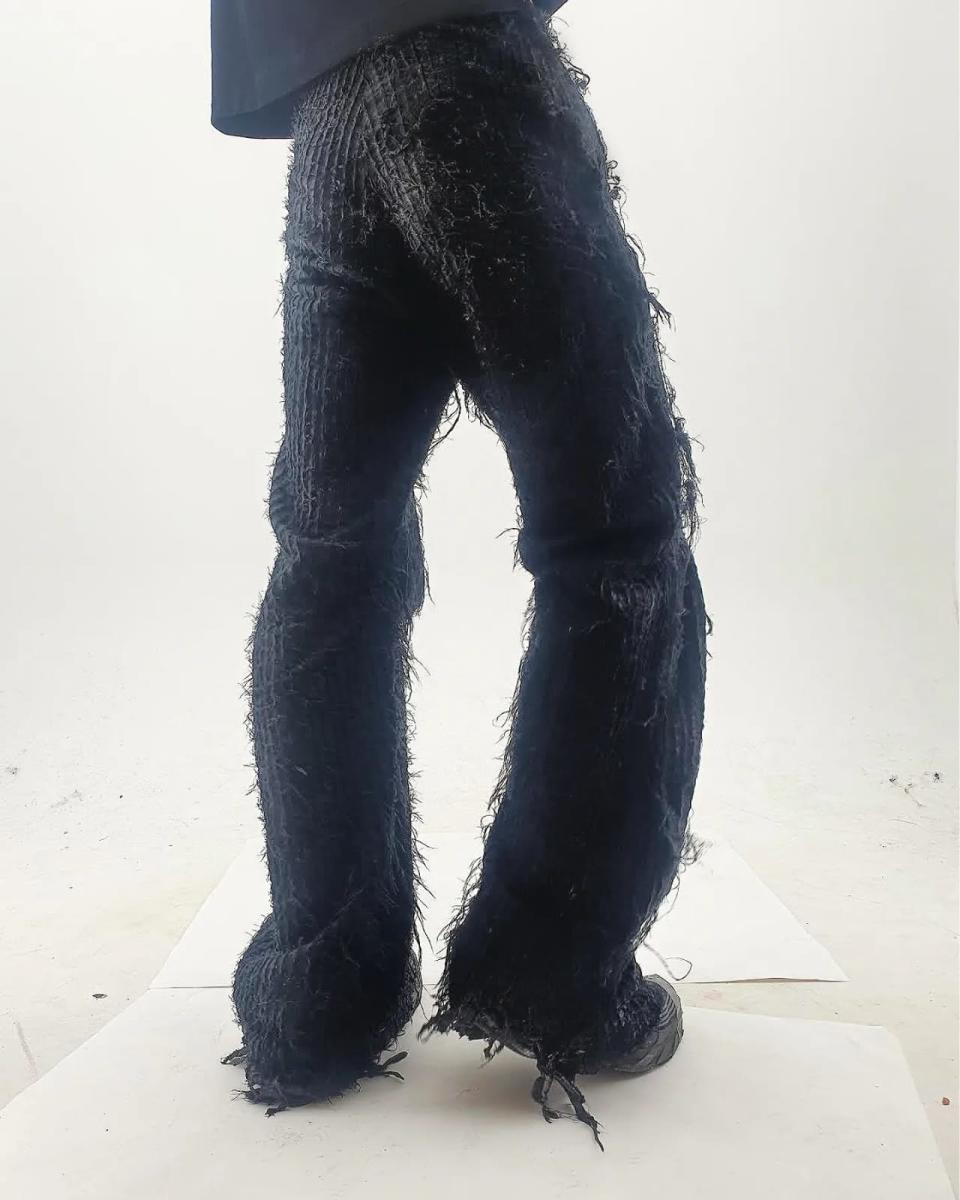
Current Saint Martins’ menswear student Kai Ghattaura has a simple design ethos.
“I have a strong interest in clothes that look better when worn over time. Clothes were made to be worn — I don’t like everything looking pristine and new,” Ghattaura explained.
Floor-length, black wool trousers feature horizontal slashes from waistband to hem, allowing the garment to develop a signature look the more it’s worn.
“The more you wear them, the more that they’ll fray, the more the bottoms will tear off,” the designer said.
Given the pants’ length, “It’s really easy to get them dirty, so they develop their own wash from walking around,” he continued.
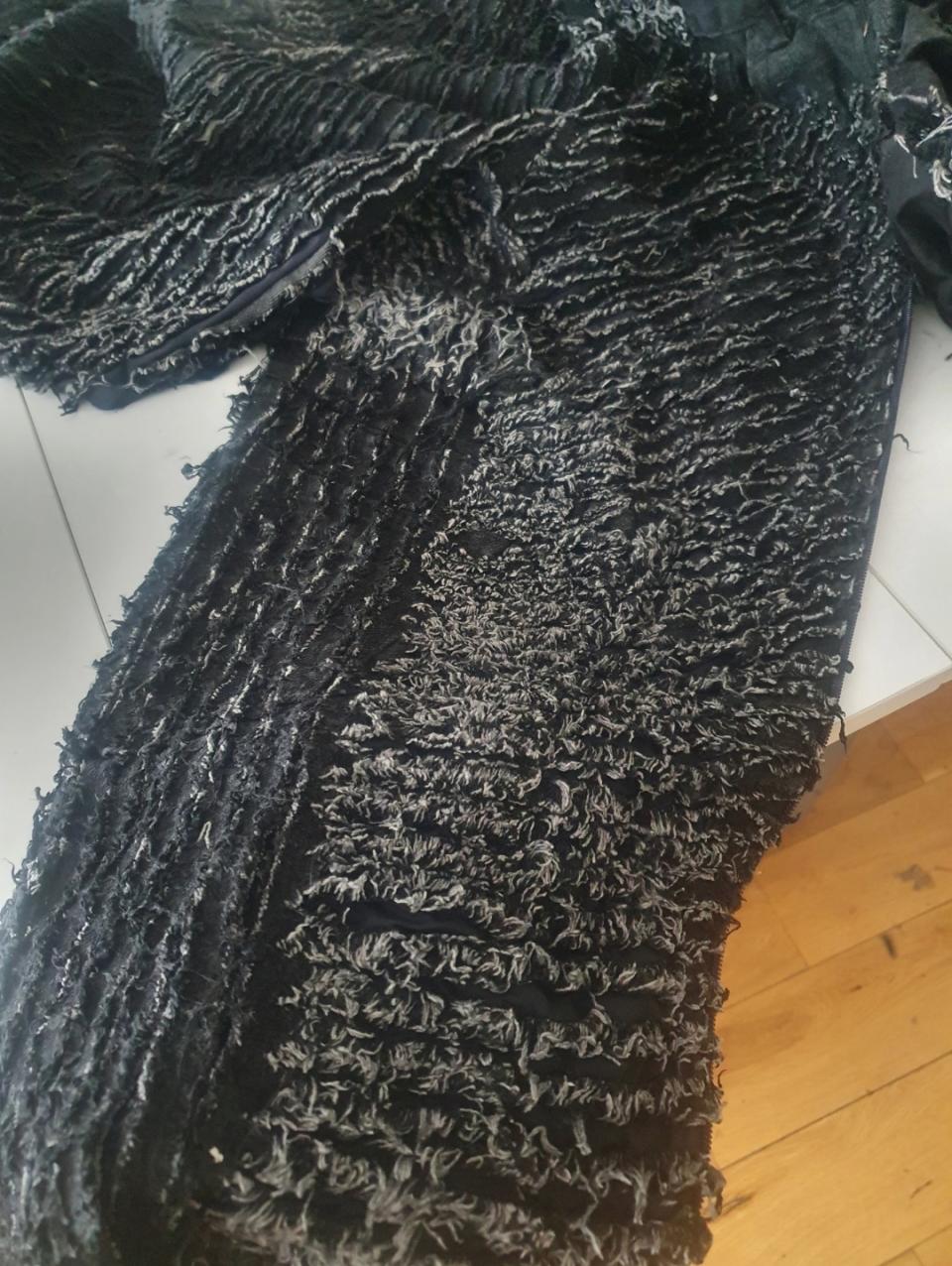
Ghattaura has been able to better flesh out his aesthetic while on his placement year, where he’s worked for Aaron Esh, Namacheko and Louis Vuitton, brands that put an emphasis on elevated streetwear, which has reinforced his focus on wearability in his own work.
“I have a lot of respect for things that are made to look incredible on a runway, but I think you can do that at the same time as it being a real garment that can be worn on the street by a real person,” he explained.
For his final collection at Saint Martins, Ghattaura plans to put a wearable spin on fantasy-based childhood interests.
“It’ll be based on a lot of stuff I was interested in when I was younger, which will probably be fantasy-related or a medieval vibe, but mixed in with this idea that it’s still real clothes at the end of the day and it’s made to be worn,” he said.
Best of WWD

